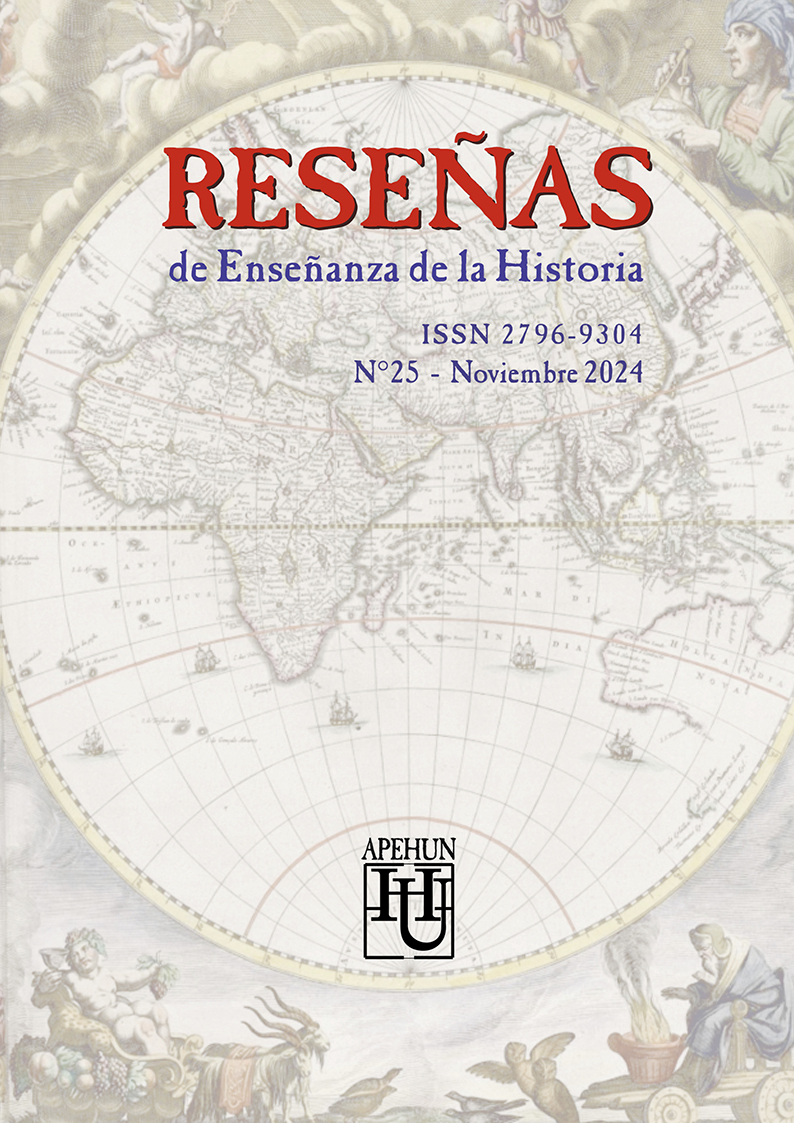Architecture of a transmedia class: games, links and pop culture in the teaching of history didactics
Main Article Content
Abstract
This article aims to disseminate one of the lines of research promoted by the subject of Special Didactics and Teaching Practice of the Professorship of History of the National University of Mar del Plata, as well as the Research Group on Didactics of History and Social Sciences (GIEDHICS), the potential of educational gamification and the incorporation of new technologies in teaching and learning processes of History and Social Sciences, as teaching strategies that allow building bridges with the visual and virtual citizenships that inhabit the classrooms of the 21st century. In this sense, the article seeks to highlight some of the playful and technological tools used for the construction of a didactic proposal that meant a theoretical and methodological enrichment for the first professional practices of future teachers in the 2023 cohort.
Downloads
Article Details

This work is licensed under a Creative Commons Attribution-NonCommercial-NoDerivatives 4.0 International License.
Reseñas de Enseñanza de la Historia distribuye sus contenidos bajo la licencia https://creativecommons.org/licenses/by-nc-nd/4.0
Usted es libre de:
Compartir - copiar y redistribuir el material en cualquier medio o formato.
La licenciante no puede revocar estas libertades en tanto usted siga los términos de la licencia.
References
Asociación Argentina de Investigadores en Historia (ASAIH). (2021). Historiar Podcast. Recuperado de: https://open.spotify.com/show/6ZzcVyIlDzcz3YaXAb7KEg
Baricco, A. (2011). Los bárbaros. Ensayo sobre la mutación. Anagrama.
Baricco, A. (2019). The game. Anagrama.
Bazán, S. (2019). Historia urgente para ciudadanías mestizas. En Funes, G. Investigación y prácticas en Didáctica de las Ciencias Sociales, pp. 199-212. EDUCO.
Burke, B. (2012). Gamification 2020: what is the future of gamification? Standford: Gartnet.
Didi-Huberman, G. (2011). Ante el tiempo. Historia del arte y anacronismo de las imágenes. Adriana Hidalgo.
FCB&Fire Spain (2013). Transmedia Storytelling. Recuperado de: https://youtu.be/5IFnSp2ilcQ
Ferrarelli, M. (2015). Textualidad desbordada. Transmedia y educación en la cultura digital. Lenguas Vivas, año 11 número 15. Recuperado de: https://www.academia.edu/21040947/La_textualidad_desbordada_transmedia_y_educac%20i%C3%B3n
Groys, B. (2023). Devenir obra de arte. Caja Negra.
Lippenholtz, B. (2019). Arquitectura de anticipación. Material didáctico del curso semipresencial Transmedia en acción: arquitecturas digitales para la innovación educativa. Universidad de San Andrés.
Lippenholtz, B. (2019). Realidades híbridas en un contexto transmedia. Material didáctico del curso semipresencial Transmedia en acción: arquitecturas digitales para la innovación educativa. Universidad de San Andrés.
Litwin, E. (2008). El oficio en acción: construir actividades, seleccionar casos, plantear problemas. En Litwin, E. El oficio de enseñar. Condiciones y contextos, pp. 89-116. Paidós.
McGonigal, J. (2011). Reality is broken: Why games make us better and how they can change the world. Penguin Press.
Movistar Plus+ (2018). La peste: La Mancebía, con Cecilia Gómez 4 | 20 Songs Tag música del S.XVI. Recuperado de: https://youtu.be/sZJ4s7MU828?si=DCWMPELQQ_Um2IE_
Movistar+ (2019). La Ruta de la Peste. Recuperado de: https://larutadelapeste.com/
Odetti, V. (2018). Narrativas transmedia. El abrojo. Recuperado de: https://www.elabrojo.org.uy/wp-content/uploads/2019/07/Narrativas-Trasmedia.pdf
Universidad Nacional Autónoma de México (UNAM) (2019). Yaopan: Un juego de la conquista. Recuperado de: https://www.noticonquista.unam.mx/yaopan

